Coming Up in ELC:
Scholarship Application: Fall 2024
- Application available online HERE
- Submission Deadline: Monday, July 8 @ 5:00 pm
- Two (2) scholarships are typically awarded: one for AEP and one for ELP
- Award will cover $2600 towards intensive tuition for the Fall 2024 (15–week) session in either AEP or ELP.
Final Reception: TALENT SHOW
- Monday, July 29
- 4:00 pm – 6:00 pm
- WCP Student Activity Center – Ballroom (WCP 2.410/2.412)
- Winners of the Fall 2024 scholarships will be announced!
- Dinner will be served.
- Each semester, our final reception features a talent show.
- Past shows have included:
-
- songs- Karaoke style or musical instruments!
- dances
- martial arts demonstrations
- poems in many languages
- international fashion shows
-
- Don’t feel shy! Grab your friends and classmates to help you out!
- We will also put together a slide show of photos from throughout the Summer. Please share your pictures here to add them to the show!
- When you’ve decided what you’ll perform, send Jack an email so that we can add you to the program and coordinate your audio and video needs.
- The deadline to let Jack know if you will be performing is Friday, July 12.
- We can’t wait to hear what you have planned!
Continuing Student Applications
- For Fall 2024
- Application available online HERE
- We would love to see you again!
Upcoming Social Events:
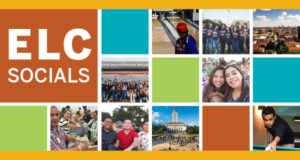
Talk Time
- Practice your English conversation skills with native English speakers!
- Wednesday, July 10
- –
- CBA 4.340
The Harry Ransom Center
The Harry Ransom Center is well-known around the world as an outstanding humanities research center. Right here on the campus of The University of Texas at Austin, the HRC’s incredible collections contain millions of writings, rare books, photographs, and works of art.
- Admission is free!
- Hours:
-
- Tuesday – Friday: 10 am – 5 pm
- Saturday – Sunday: 12 pm – 5 pm
- Closed Mondays
-
- 300 W 21st St, Austin, TX 78712
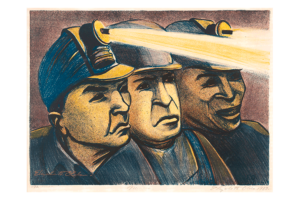
Public Works, Art by Elizabeth Olds:
- Exhibition open until October 6, 2024.
- “Explore the under-told story of Elizabeth Olds (1896–1991), an innovative artist who worked to bring art into the daily lives of more Americans. The first woman to receive the Guggenheim Fellowship for visual arts, Olds became a vital force in the Works Progress Administration (WPA) and later a celebrated children’s book author-illustrator. As a WPA printmaker and educator, she captured the essence of Depression-era America and championed the affordability and accessibility of silkscreen printing. Through her dedication to experimentation, she sought to activate the uniquely democratic possibilities of printmaking and mobilize fine art as an impactful education tool. This exhibition represents the first critically engaged exploration of Olds’s extensive body of work, showcasing over 100 prints, paintings, drawings, and illustrations from the 1920s to the 1960s. The exhibition examines Olds’s artistic legacy—from her poignant portrayals of labor conditions in American industry, to her satirical social commentary, to her engaging children’s books—and underscores the enduring significance of art in everyday life.” HRC
- This exhibition was organized by Dr. Tracy Bonfitto, Curator of Art.
- Public Tours: Tuesday-Friday at 12:00 pm, Saturday & Sunday at 1:00 pm and 2:00 pm.
Frida Kahlo’s Self-Portrait with Thorn Necklace and Hummingbird:
- Frida Kahlo was a self-taught artist and painter living in the early 20th century.
- She is one of the most famous modern Mexican artists.
- Her life and many struggles continue to inspire women, Latinos, people with disabilities, and LGBTQ+ people.
- HRC has one of Kahlo’s best-known self-portraits.
- Read more about Frida Kahlo’s Self-Portrait.
The Niépce Heliograph:
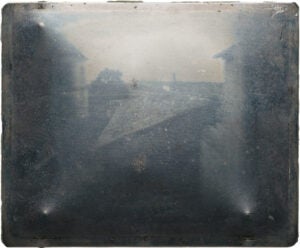
- Made in 1827 by Joseph Nicéphore Niépce. 12 years before the photograph was invented!
- “It is the earliest photograph produced with the aid of the camera obscura known to survive today.”
- “He tried an array of chemicals, materials, and techniques to advance the process he ultimately called héliographie, or ‘sun writing.'”
- “He inserted the plate into a camera obscura and positioned it near a window in his second-story workroom. After several days of exposure to sunlight, the plate yielded an impression of the courtyard, outbuildings, and trees outside.”
- Niépce called these ghostly pictures “points de vue.”
- Read more about The Niépce Heliograph.
- And, if you need a reminder of what a camera obscura is (like I did), check out this simple explanation.
The Gutenberg Bible:
- “In Mainz, Germany, in the mid-1450s, Johann Gutenberg and his partner Johann Fust published more than 150 large-format copies of the Bible in Latin.”
- The Gutenberg Bible was the first book printed with a printing press to mass-produce books.
- The printing press “helped change how information traveled in Europe and, later, the world.”
- HRC has one of only twenty surviving copies in the world!
- You can read more about it and browse the digitized pages of this nearly 600-year old book.
There is so much more for you to browse in the Harry Ransom Center’s Digital Collection!
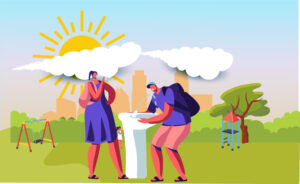
Hot Weather Safety
Summertime in Austin brings multiple days over 100 degrees. The City of Austin encourages residents to keep cool, hydrated, and learn important tips for heat safety.
“This summer we want to make sure Austinites and visitors in our City are prepared to enjoy the season safely. Climate change is making the heat season more extreme. Longtime Austinites are familiar with the heat and humidity we experience every summer, but should not take preparations for granted,” said Ken Snipes, Director of Austin’s Office of Homeland Security and Emergency Management. “New residents and visitors should be particularly cautious as they may not be prepared for the impacts of extreme heat. It is important for everyone to be aware of measures to take to protect yourself, loved ones and pets from heat-related illness.” austintexas.gov
Staying hydrated and taking measures to keep yourself cool can help prevent heat-related illnesses like heat exhaustion or heat stroke. When outdoors, wear loose, lightweight, light-colored clothing, apply sunscreen and drink plenty of water to stay hydrated.
Stay Hydrated
You can help prevent heat-related illness by drinking water throughout the day.
- Avoid sugary or alcoholic beverages in the heat.
- Those working, exercising or playing outdoors for a prolonged period should consider adding an electrolyte beverage to their regular water breaks.
- Drink water regularly, even if you are not thirsty, to avoid becoming dehydrated.
- Have a shady spot nearby to take frequent breaks as well.
Cooling Centers
The City of Austin and Travis County have Cooling Centers available during the summer months for people to escape the heat and cool down. City facilities, including branches of Austin Public Library and Park and Recreation’s rec centers, can be used as Cooling Centers.
- These facilities are meant to serve as a temporary reprieve from the heat, during normal operating hours.
- To review the current list of Cooling Centers, locations and hours of operations, please visit: austintexas.gov/alerts.
- Several locations offer extended hours during periods of excessive heat.
- Please Note: The published list is current as of today but changes frequently. Please always check austintexas.gov/alerts for the most up-to-date cooling center information and/or call to verify hours before arriving.
Car Safety
Look before you lock! Never leave people or pets unattended in a closed car on a warm day. Temperatures in vehicles climb much faster and can reach dangerous temperatures in only a few minutes.
- On an 80-degree day outside, temperatures inside a vehicle can reach 94 degrees in two minutes and more than 120 degrees in less than an hour.
- Cracking the windows open does not significantly reduce how high the temperature inside the vehicle can reach.
- To avoid leaving a child, pet, or someone else in the back seat of your vehicle, place something in the back seat you will need upon arriving to your destination like a purse, bag, or phone. This will force you to retrieve it from the back seat and remind you to look before you lock.
Keeping Your Home Cool
- Keep curtains drawn and blinds closed to reduce the amount of sunlight entering your home.
- Running ceiling fans or electric fans can move air through the home, making it feel cooler as well.
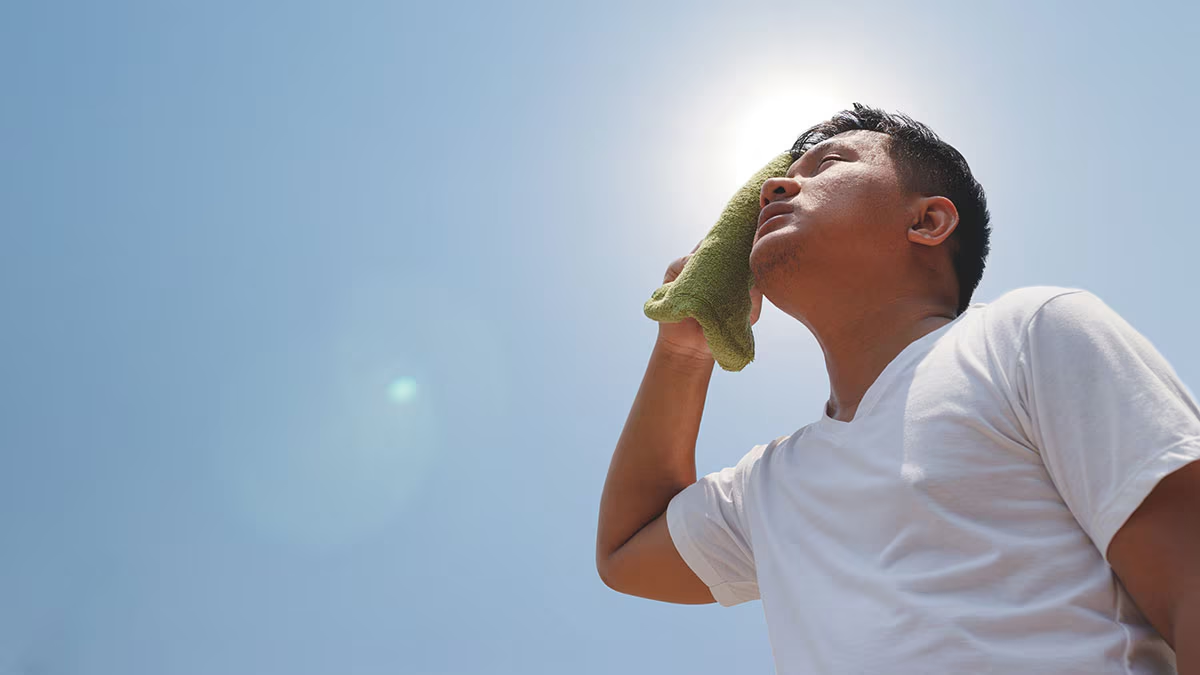
Heat Exhaustion and Heat Stroke
When temperatures rise in Austin, you need to know how to prevent and respond to heat related illnesses. Being exposed to high temperatures for long periods of time or engaging in vigorous activities in high temperatures can lead to heat exhaustion or heat stroke, especially if you are dehydrated or are taking certain medications such as antihistamines, blood pressure medication, or antidepressants. healthyhorns.utexas.edu
Sweat usually evaporates from the skin to help cool the body. It is harder for sweat to evaporate if:
- The humidity is high
- You are wearing tight or layered clothing that covers most of your skin
- You are dehydrated, which will cause you to produce less sweat
Heat Exhaustion:
Heat exhaustion is a less serious condition than heat stroke.
Symptoms can include:
- Normal or only slightly elevated body temperature
- Cool, moist (clammy), pale skin
- Sweating (sometimes heavily)
- Headache
- Nausea/vomiting
- Dizziness/weakness/fatigue
- Rapid pulse
- Decreased blood pressure
- Dark urine
- Muscle cramps
- Rapid/shallow breathing
Here is how to respond to heat exhaustion:
- Move into the shade or an air conditioned space.
- Loosen clothing or remove as much clothing as possible.
- Drink cool water or non-alcoholic, non-caffeinated beverages like sports drinks to help restore electrolyte balance.
- Take a cool shower or sponge bath.
- Spray cool water on yourself and sit in front of a fan or have others fan you.
- Massage or stretch cramping muscles.
- Monitor your temperature for changes in your condition that suggest heat stroke (see below).
- Call the UHS Nurse Advice Line at (512) 475-6877 if you have questions.
- If symptoms do not improve, last longer than an hour, or the victim begins vomiting, seek medical help. Heat exhaustion can quickly lead to heat stroke within minutes.
- Seek emergency treatment or call 911 if attempts to decrease body temperature fail or if you experience chest pain, abdominal pain, persistent vomiting so that you can’t keep down fluids, or if you develop any of the symptoms of heat stroke (see below).
Heat cramps are another heat-related illness that can progress into heat exhaustion or heat stroke if untreated. If you begin experiencing muscle or abdominal cramps in the heat, stop your physical activity, move to a cooler location, drink water and wait for the cramps to go away before doing any more physical activity. If the cramps last longer than an hour, or the person exhibits signs of heat exhaustion or heat stroke, call 911.
Heat Stroke:
Heat stroke is a severe medical emergency situation in which the body loses its ability to cool itself. The internal body temperature rises to extremes, sometimes as high as 106° F (41.1° C).
Heat stroke can result in death if not treated promptly.
Symptoms include:
- Very high body temperature, usually over 104° F (40° C)
- No sweating
- Hot, dry, red skin
- Rapid pulse
- Difficulty breathing
If body temperatures aren’t reduced, symptoms can progress to:
- Confusion, irritability, disorientation, or hallucinations
- Seizures
- Loss of consciousness and coma
- Death
To respond to heat stroke, CALL 911 or go to the closest emergency room.
While waiting for EMS:
- Move the person into the shade or into air conditioning.
- Elevate their feet higher than their head to reduce the chance of shock.
- Remove clothing and attempt to cool them down by wrapping them in a cool, wet sheet or spraying them with cool water and fanning them.
- Put ice packs or cold compresses under their arms, on their groin area, and behind their neck.
- Give them cool drinks only if they are not disoriented and not vomiting.
- Stay with them until EMS arrives.
Remember: MOVE THEM, COOL THEM, CALL 911.
Preventing Heat Exhaustion and Heat Stroke:
Stay hydrated by drinking lots of non-alcoholic, non-caffeinated beverages, even if you’re not thirsty.
- Drink enough to keep your urine very pale yellow. If it’s a dark yellow, or if you are going for long periods of time without urinating, you’re dehydrated. (Some medications and supplements can turn urine bright yellow or orange. If in doubt, ask a pharmacist or your healthcare provider about the medications and supplements you use.)
- Don’t stay outside in high temperatures for long periods of time. Take breaks indoors.
- Don’t engage in vigorous activity in the hottest part of the day: 11am – 5pm.
- Wear loose, lightweight clothing made of fabric that breathes and allows your sweat to evaporate.
- If you start to feel very hot or have any of the symptoms of heat exhaustion, respond immediately as described above under “heat exhaustion.”

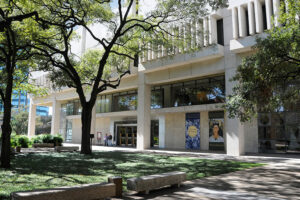
Thanks for the information! I would like to visit The Harry Ransom Centerto to see their collection. Also, the information about the heat it is very important, especially for those who are not used to it!
Very true. Thanks for reading!